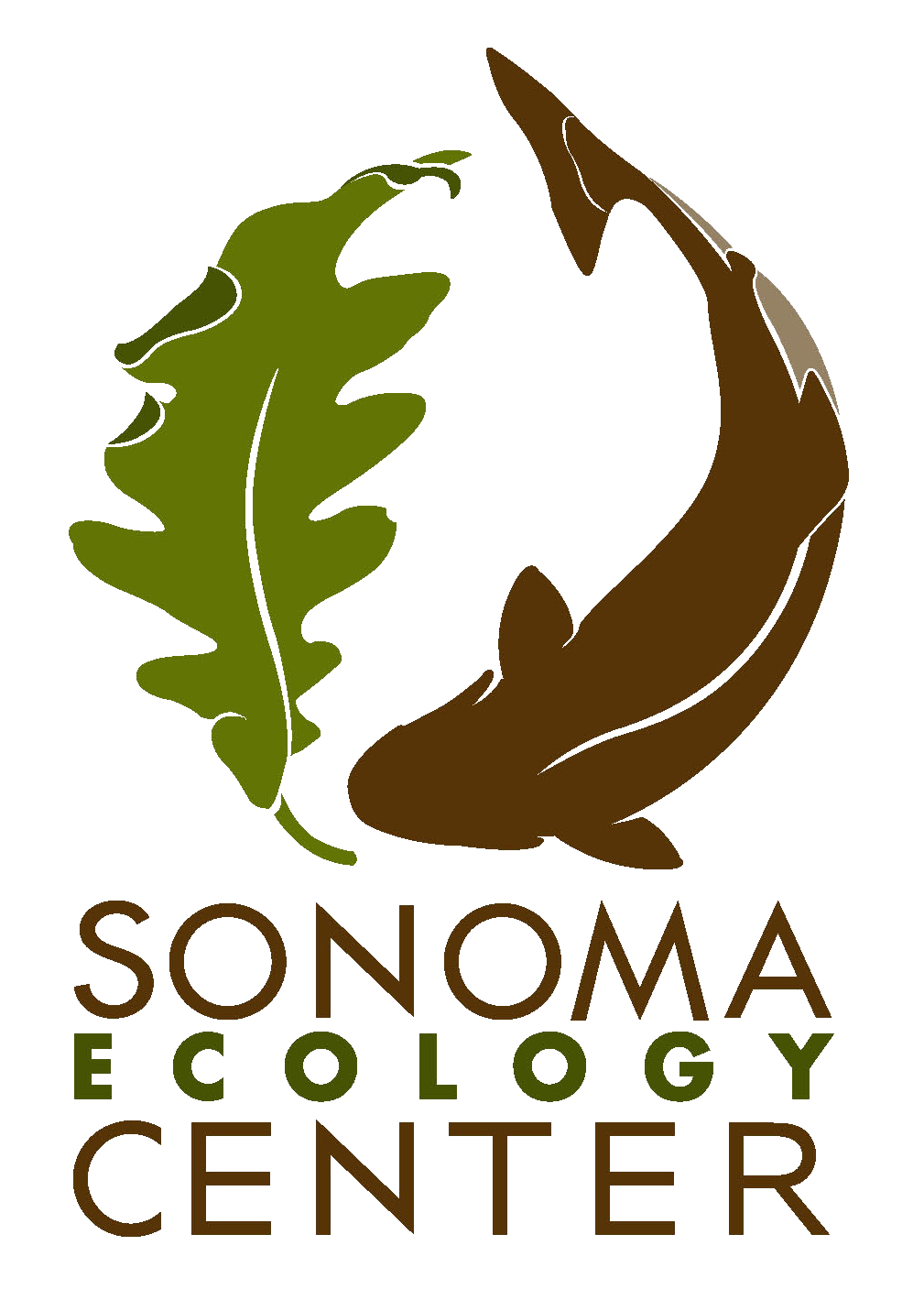On a sunny week in March at the Boys and Girls Club of Sonoma, Julia Megna watches her students put their paintbrushes to canvas, beginning a “mural-in-parts” to express their feelings and convey a message about climate change and the environment.
Julia is an Education Project Manager at Sonoma Ecology Center, as well as an artist, dancer, and storyteller. “My greatest devotion is to the environment and its preservation,” says Julia, “I chose to become an educator because of my drive to change the human impact on the planet.” Julia’s work supports Sonoma Ecology Center’s education programming, as well as community outreach. Prior to her role at SEC, Julia taught in Sonoma County elementary schools for thirty-two years. Now, through workshops, programming, and advocacy, she strives to serve the community by showing how art and creative expression can empower us to take on environmental action.
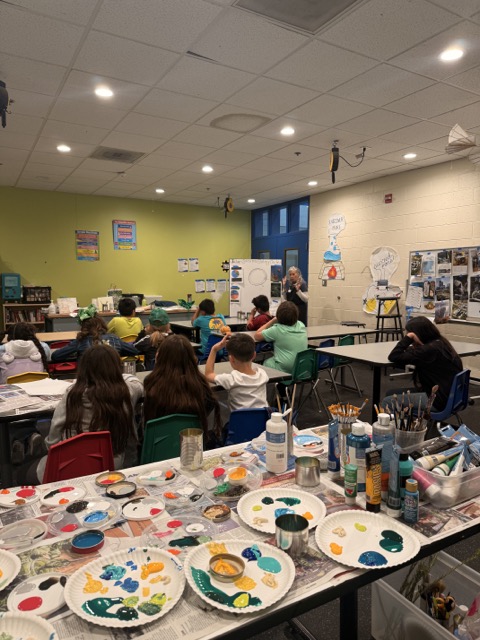
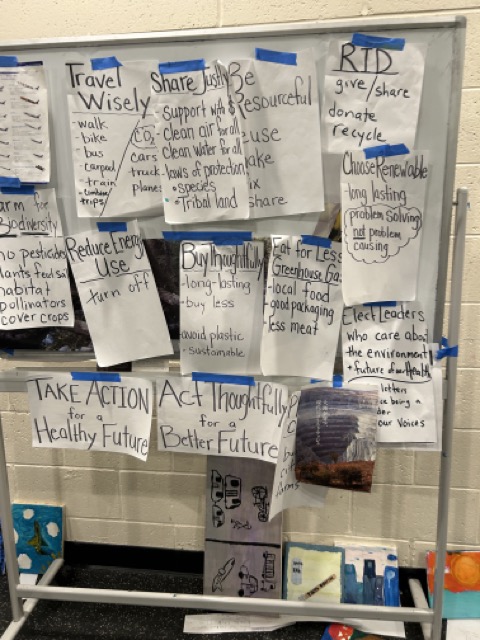
In the classroom, Julia helps students brainstorm their illustrations and visualize their ideals for a greener, brighter future. Photos courtesy of Nina Cheek (left) and Julia Megna (right).
Julia’s recent workshop with 3rd-5th grade students at the Boys and Girls Club is a prime example of this mission. Over three afternoons, students were encouraged to paint and narrate their vision for environmental transformation—including how they see and perceive climate impacts, and what changes they hope for in the future. “It encourages them to think about what they want for the future,” affirms Julia. After their paintings, students wrote narratives on the purpose of their art. They were asked, “What’s your message? What are you asking people to do?” From prospects of greener infrastructure and architecture to walkable cityscapes, students flourished under the opportunity to visualize a more sustainable environment using acrylic paint and their imaginations.
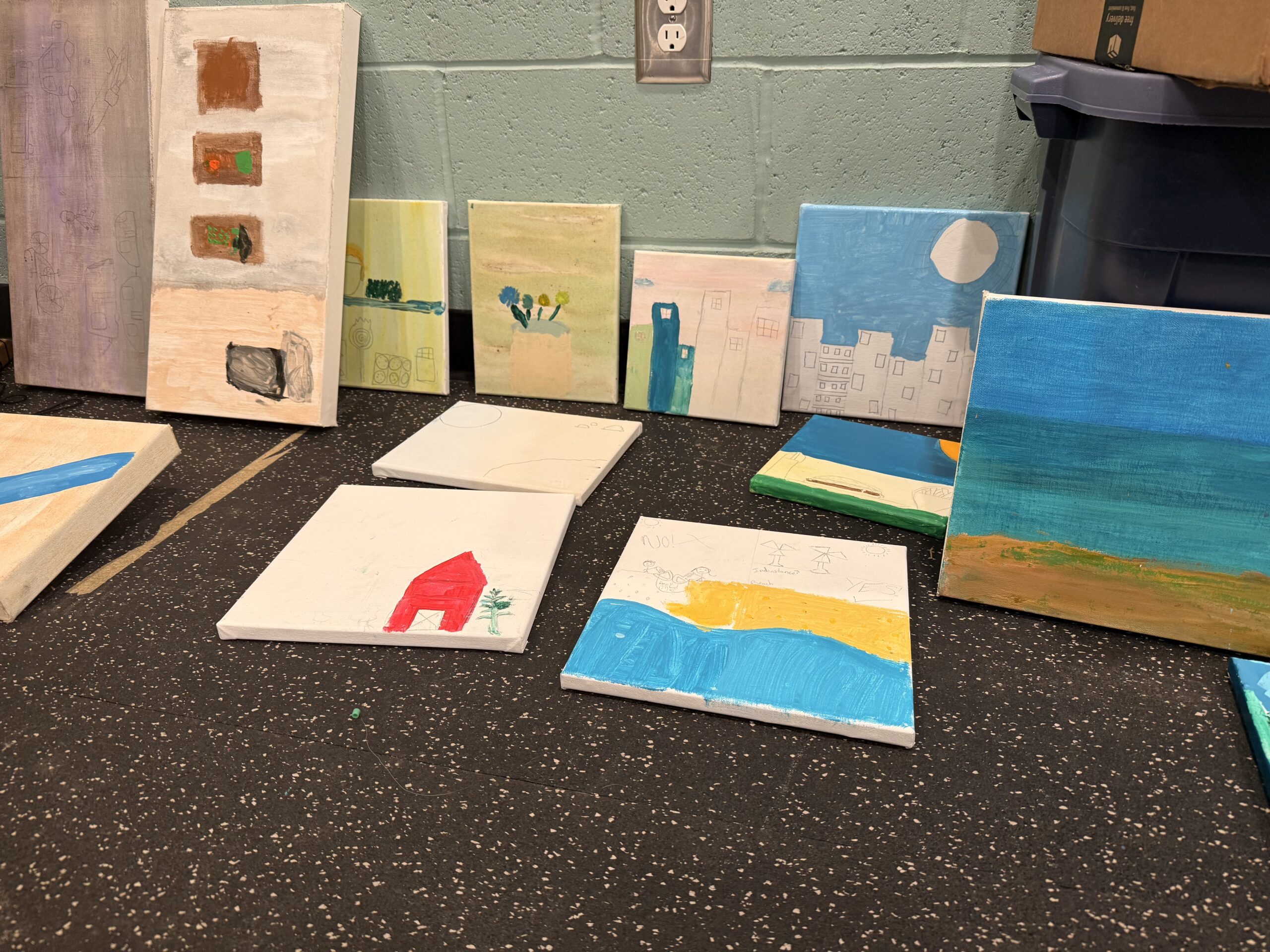
Students’ acrylic paintings began to take shape in the form of sustainable cityscapes, natural landscapes, and more. Photo courtesy of Nina Cheek.
The power of art and storytelling is only continuing to be recognized within climate action circles. Creative expression helps us communicate our lived experiences. It is rooted within the tangible things we see, feel, and love. When it comes to environmental challenges or successes we’ve faced, it has a lasting impact because it resonates with us emotionally, far longer than statistics or data tables.
Thus, art can create a bridge between hard data and collective understanding, allowing us to relate to climate conversations on a larger scale. In fact, there is evidence to show that visually artistic representations of climate data are received with less political polarization than the equivalent data graphs. Therefore, art may also be a helpful tool in encouraging pro-climate action across the political spectrum, particularly when it allows for moments of introspection and reflection.
“Art lets you get out of your head. It gets you out of that space where we’re caught up in facts and numbers,” says Julia. This may be particularly beneficial to youth, who can begin to realize their roles as environmental stewards through hands-on engagement. “We need to use all the modalities to help them grow into their role as stewards. To embrace their responsibility for the environment. They need to try it on in all possible ways. To sing about it, to move about it.” The stories that children share about their own experiences with nature, or climate change, can then be used as springboards for larger environmental conversations.
Creative expression can take on a multitude of forms beyond painting. Written stories, dance, teaching tools, and handmade signs advocating for change are all examples that Julia shares. At Sonoma Ecology Center’s Summer Science Camps, children have the opportunity to connect with the earth by digging their hands into the soil and crafting in the outdoors. Students that took part in SEC’s Earthlings club developed scripts and video projects about recycling for the City of Sonoma. “Art allows them to embrace something as their own,” according to Julia, “it allows us to express emotions.”
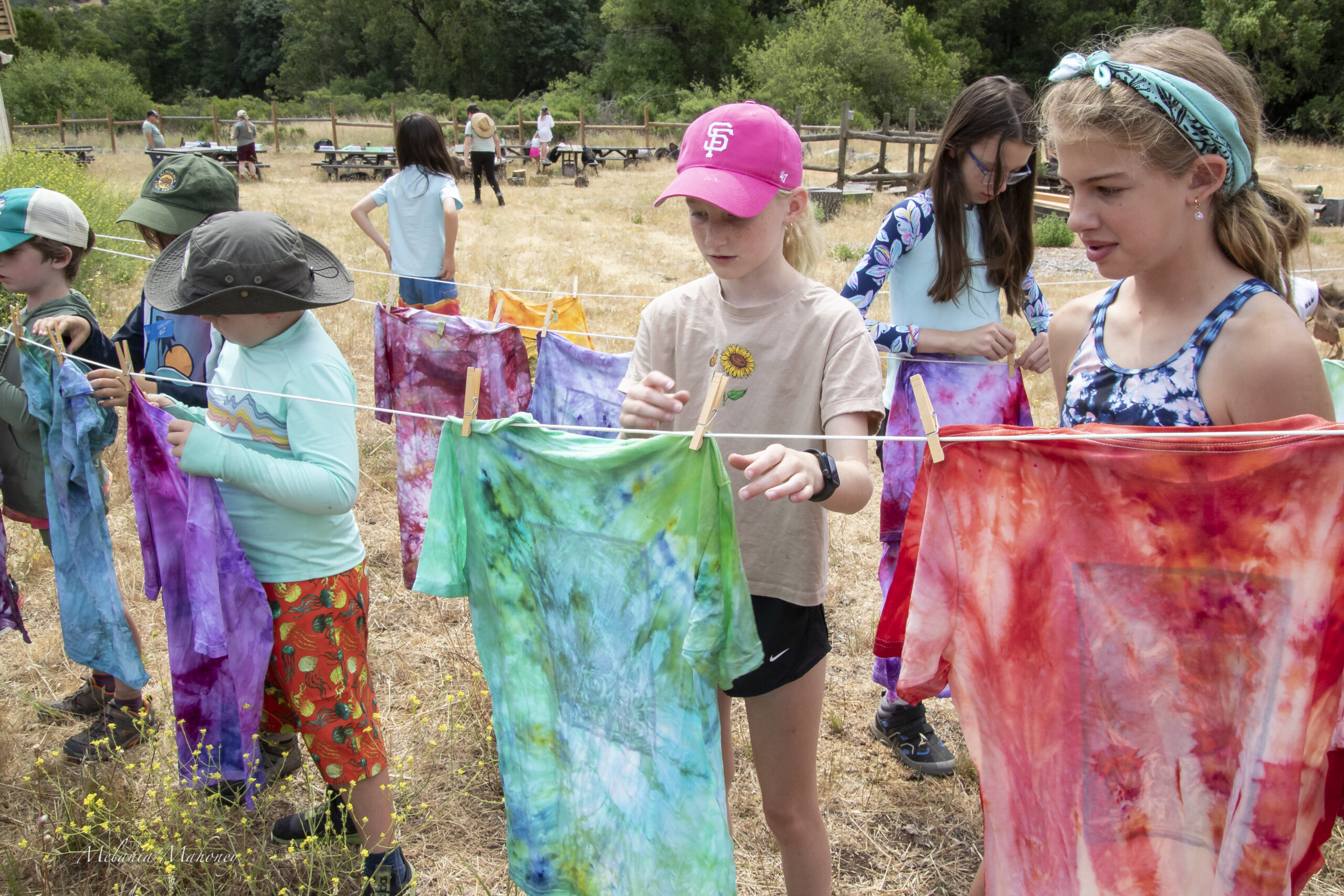
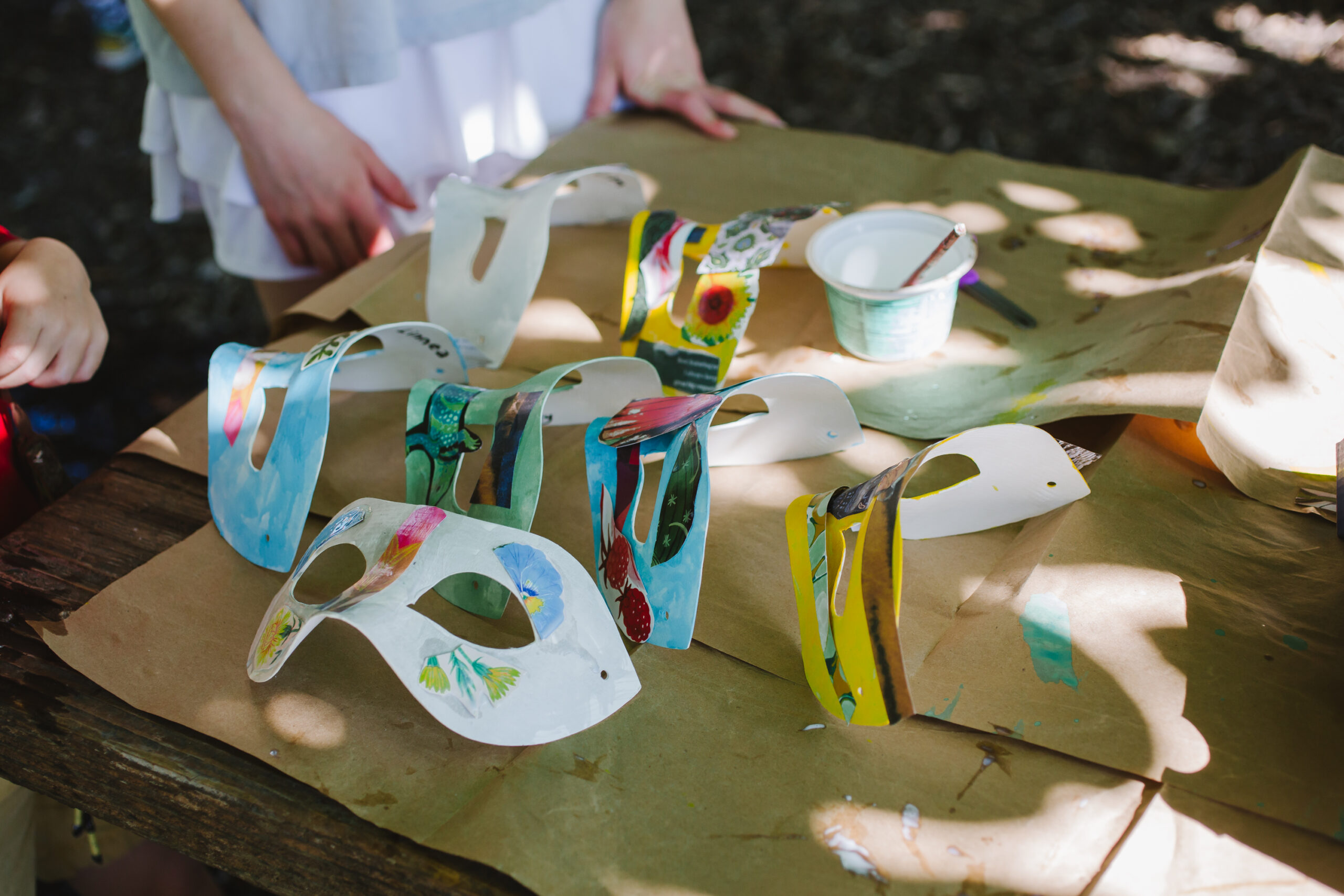
Participants in Sonoma Ecology Center’s 2024 Creek Camp using natural dyes to design their own tie-dye creations. Photo courtesy of Melania Mahoney.
Images of natural flora and fauna decorate participants’ hand-crafted masks in Sonoma Ecology Center’s 2024 Garden Gnomes Camp. Photo courtesy of Marielle V Chua.
Julia leads workshops for adults as well, including guided meditations and walks. Similarly to youth, she believes that hands-on interaction and stories are the best way to engage ourselves with the environment. “We need to see it, touch it, feel it.” Without this, it is easy to feel spatially and temporally distant from the impacts of climate change. Recent data shows that roughly only 52% of Californians believe that climate change will affect them personally. Art and storytelling help to bridge this distance, identifying the issues and impacts that are close to come.
There are plenty of climate stories for us to tell in Sonoma County. Many of us have already faced climate impacts, from wildfires to flooding and extreme heat. By telling these stories and coming together in support of one another, we can continue to mobilize and fuel our commitment to climate action. Creative expression is one powerful way to spark this action. “Sometimes, bringing it into other people’s awareness is what we need to begin making different choices, or to get involved,” explains Julia, “The good news is that we are powerful. I have so much faith that humans can solve problems. So, let’s do it together.”
Learn more about our dedicated Education Team and our mission to cultivate a new generation of environmental stewards in Sonoma County. Or, help support our educational programming for both youth and adults in Sonoma County below.
